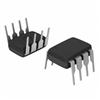TDA4482-D: Features: ·High signal sensitivity·Simple filter configuration and few external components·Processing of two carrier stereo signals·ESD protected·Low intercarrier distortions· Alignment-free interca...
floor Price/Ceiling Price
- Part Number:
- TDA4482-D
- Supply Ability:
- 5000
Price Break
- Qty
- 1~5000
- Unit Price
- Negotiable
- Processing time
- 15 Days
SeekIC Buyer Protection PLUS - newly updated for 2013!
- Escrow Protection.
- Guaranteed refunds.
- Secure payments.
- Learn more >>
Month Sales
268 Transactions
Payment Methods
All payment methods are secure and covered by SeekIC Buyer Protection PLUS.

 TDA4482-D Data Sheet
TDA4482-D Data Sheet






